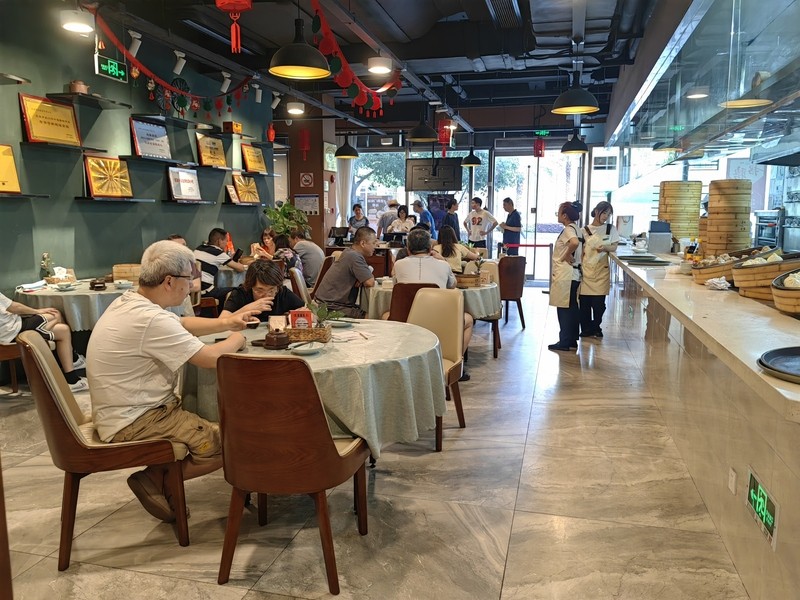No one knows how many more years we need to work on. We have been working on it for 12 years now, and they have studied the water in the "Shui Jing Zhu" one by one. Team | Project Team | Shui Jing Zhu
Is there a book that can make yesterday's mountains and rivers intersect with today's cities? Is there a picture that can make the millennium long Chinese civilization stand out on paper?
Li Xiaojie led the team and, over a period of 12 years, provided an answer - the newly compiled "Annotations on the Water Classic" and the newly drawn "Annotations on the Water Classic".
Starting from the four aspects of school, writing, interpretation, and illustrations, they further sorted out complex versions of classical books, integrating traditional textual research with modern technology, and accurately reproducing ancient river and waterway systems and natural and cultural landscapes on today's large-scale maps.
In a prosperous era, one should cultivate literature and write history in a painting. Li Xiaojie and his team have pushed the research on "Shui Jing Zhu" to an unprecedented new height.
At present, research achievements such as "Annotations, Annotations, Illustrations, and Annotations of the Water Classic" and "A Collection of Existing Water Classic Annotations and Annotations" have been published. However, a journey to explore the changes in the natural environment of ancient and modern times, sort out the historical development context, and promote traditional Chinese culture has just begun.
Li Xiaojie, Professor and Doctoral Supervisor at the Institute of Chinese Historical Geography, Fudan University
Preserve the past while still preserving the new
Li Xiaojie collected nearly 80 versions of the Shui Jing Zhu, which exceeded what Hu Shi had seen at the time.
In recent years, benefiting from the development of modern technology, some scattered versions of "Shui Jing Zhu" have emerged both domestically and internationally.
More diverse versions of information, more advanced exploration techniques, and more comprehensive research methods... They all seem to be calling for a new era of "Shui Jing Zhu", so that this "indispensable and indispensable" book can be reactivated.
Liberation Weekend: "Shui Jing Zhu" was written during the Wei, Jin, Southern and Northern Dynasties. Why did Li Daoyuan choose to write this book at this time?
Li Xiaojie: Before Li Daoyuan wrote the "Shui Jing Zhu", China had works such as the "Shan Hai Jing", "Han Shu Geography Chronicle", and "Shui Jing" that recorded the geography of mountains and rivers. However, as Li Daoyuan said in the preface of the "Shui Jing Zhu", "In the past, the" Da Yu Ji "recorded mountains and seas, which were not well prepared in the Zhou Dynasty, and the" Geography Chronicle "recorded them briefly but not in the Zhou Dynasty." Although the "Shui Jing" was roughly edited with Jin Xu, there was a lack of elaboration. "He felt that the content contained in these books was still not comprehensive enough, so he collected information again and reorganized the annotations. We have completed 40 volumes of the Shui Jing Zhu, constructing a complete geographical system of the Middle Ages, which is based on the principle of water as evidence of the land and preserving the ancient times.
Liberation Weekend: Li Zehou believes that the Wei, Jin, Southern and Northern Dynasties were an era of philosophical re liberation. With the collapse of the Confucian classics of the Han Dynasty, a concept of abandoning trivialities, pedantry, and absurdity, emphasizing academic utility and utilization value, began to prevail. This seems to coincide with Li Daoyuan's "Shui Jing Zhu".
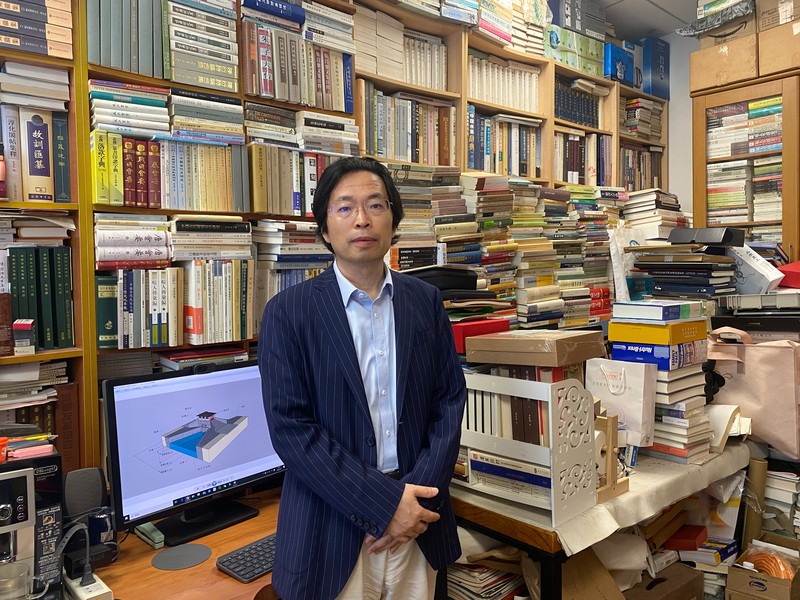
Li Xiaojie: "Shui Jing Zhu" has made up for the shortcomings of "Shui Jing", with content far exceeding that of "Shui Jing", and the writing is more than thirty times that of "Shui Jing". The Shuijing records only 137 rivers, while the Shuijing Commentary expands to 1252, which is about ten times the original number.
Li Daoyuan not only detailed the source, flow direction, passage, tributaries, confluence, destination, and changes of each waterway, but also recorded the natural landscape of mountains and rivers, climate and vegetation, cultural landscape, and the construction history of small and large cities in each watershed. These contents greatly enrich the connotation of this book, allowing people to comprehensively and accurately understand the historical and geographical conditions of this period, and to a certain extent, have practical value.
Liberation Weekend: In ancient Chinese literature that records rivers and waterways, "Shui Jing Zhu" holds the position of "cannot be without one, cannot have two", and is even called "an unparalleled book in the universe.". When did its value attract widespread attention from people?
Li Xiaojie: For five hundred years after the completion of the Shui Jing Zhu, it was circulated through handwritten copies. The earliest official record can be found in the Jing Ji Zhi in the Book of Sui. In some geographical records from the Sui Dynasty to the Northern Song Dynasty, citations to the Shui Jing Zhu can often be seen. Such as the Tang Dynasty's "Yuanhe County Map" and the Northern Song Dynasty's "Taiping Universe Record".
During the process of handwritten transcription, deviations, omissions, and misreadings of information were prone to occur. In addition, due to differences in versions and wars, many parts of the Shui Jing Zhu could no longer be read by the early Ming Dynasty.
However, this book is extremely important. On the one hand, many works related to geography use it as a key source of information, which has important reference value for studying the historical changes of Chinese society and geography. On the other hand, the literary value of "Shui Jing Zhu" is very high, containing many myths, legends, allusions, and vocabulary materials.
So, starting from the Ming Dynasty, a specialized study called "Li Xue" was gradually formed to study the "Shui Jing Zhu". However, during this period, scholars paid more attention to its literary connotation and aesthetic taste, and a school of ci and zhang, represented by Tan Yuanchun, emerged. In the Qing Dynasty, people began to focus on its historical and geographical value. Scholars have compared the descriptions in the "Shui Jing Zhu" with the current hydrogeological conditions and gained many new insights. At that time, the geographical atlas drawn using Western technology also deepened scholars' understanding of the Shui Jing Zhu.
Southern Song Dynasty Edition
Liberation Weekend: After experiencing such ups and downs, why can "Shui Jing Zhu" still be basically and completely circulated to this day?
Li Xiaojie: This cannot be achieved without generation after generation of proofreading, annotation, and cross temporal communication and verification. Although this makes "Shui Jing Zhu" one of the most complex versions of Chinese classics, it is precisely because of so many versions that we can still deeply study and interpret it today, allowing this classic work with serious textual omissions and errors in circulation to be understood by Chinese people today.
Liberation Weekend: At the 2022 National People's Congress and Chinese People's Political Consultative Conference, "Strengthening the Protection and Utilization of Cultural Relics and Ancient Books" was first included in the government work report. For ancient classics like the Shui Jing Zhu, version proofreading is too important.
Li Xiaojie: Version research is the most fundamental foundation for conducting specific research on "Shui Jing Zhu". Only by collecting as many relevant versions as possible, comparing similarities and differences in detail, can the value of each version be evaluated, errors be identified, and a foundation be laid for subsequent research on "Shui Jing Zhu".
The earliest surviving edition, commonly referred to as the "residual Song edition", was printed around the early Southern Song Dynasty, with only eleven and a half volumes remaining, and not a single leaf being complete, with less than one-third of the word count of the entire book. Until the Ming Dynasty, with the development of research on the "Shui Jing Zhu", versions with proofreading of the base text emerged.
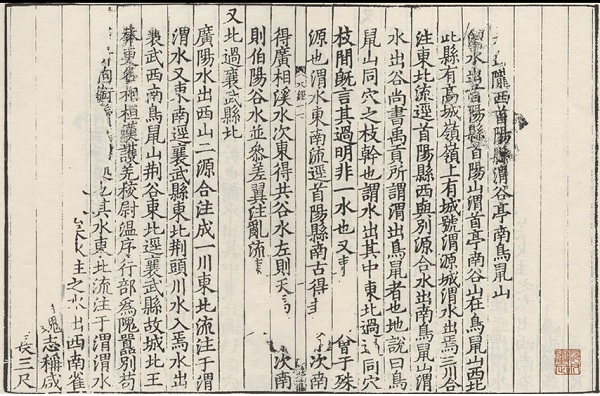
We were inspired by Mr. Hu Shi's idea of restoring the "ancient version" of the "Shui Jing Zhu" in his later years, and proposed the views of "ancient version system" and "modern version system". We selected 29 representative versions of the "Shui Jing Zhu" and conducted in-depth exploration one by one, comparing them with each other, and finally clarifying their respective changes, forming the book "Collection and Study of Existing Shui Jing Zhu Version". The book also includes over 300 related version images to visually demonstrate our research conclusions.
Liberation Weekend: Are there any new discoveries in the process of clarifying the version of "Shui Jing Zhu"?
Li Xiaojie: During the process of version review, we did make some unexpected discoveries. For example, the Chen Renqing publication that was originally thought to have been lost was rediscovered, the value of Wang Jun's school edition, which had been buried by the academic community since Qianlong, was excavated, and some of Shen Bingxun's innovative ideas in editing erroneous editions were affirmed.
New Annotations on the Water Classic
Liberation Weekend: These research results are also presented in the newly drawn "Shui Jing Zhu Tu"?
Li Xiaojie: That's right. The new "Shui Jing Zhu Tu" was drawn on a topographic map of 1:250000, so every tributary and every natural, cultural, and geographical element is very clear. In terms of the presentation form of the map, we have adopted the form of "ancient ink and modern Zhu" with slight modifications. The ancient water is marked in blue, the ancient land is marked in black font, and the current water and current land are marked in red font, reflecting the ancient water and ancient land in comparison with the current water and current land. For some famous cities and water conservancy projects, we also have enlarged partial views. Innovations have been made in presentation methods by combining index maps, concept maps, whole watershed maps, sub watershed maps, and locally enlarged maps. A map can only be used well in the future if it is made useful.
Drama and Stage
Li Xiaojie's office is located on the 21st floor of the West Main Building of Guanghua Building, Fudan University. Here, the presence of the word "Yu Gong" is very high.
At the beginning, "Yu Gong" was an article in the Book of Documents, which could only be written in a thousand words, but could delineate territories, determine nine provinces, investigate resources, and understand customs.
Later on, "Yu Gong" became the name of an academic group initiated by Gu Jiegang and Tan Qixiang to promote the transformation of Chinese historical geography research to historical geography research.
Now, "Yu Gong" is the symbol of the Institute of Historical Geography at Fudan University, with a round seal like appearance that exudes a sense of harmony and connection between ancient and modern times.
Liberation Weekend: What is the origin of "Yu Gong" from the Institute of Chinese Historical Geography at Fudan University? What is the relationship with the development of Chinese historical geography?
Li Xiaojie: "Yu Gong" in the Book of Documents is a work written by Wei people during the Warring States period, who named it "Da Yu". It is also the first regional geographical work in China. The content of "Yu Gong" is extremely rich and can be regarded as the source of Chinese historical geography.
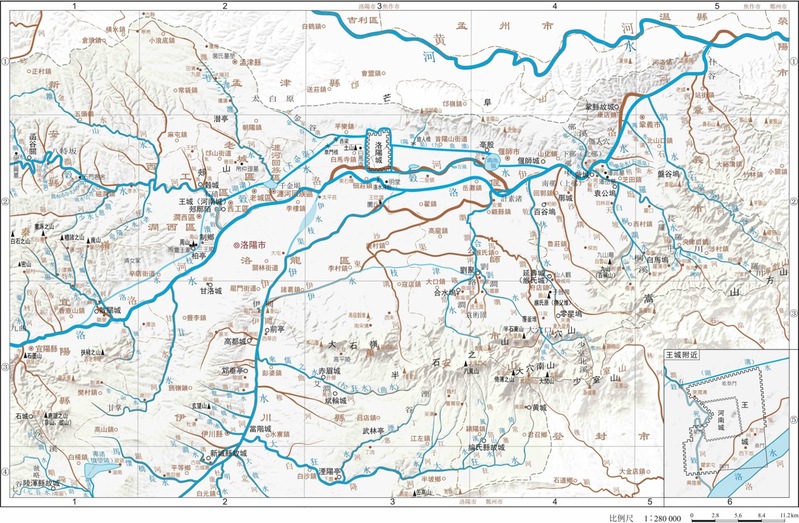
In ancient China, there was no term for "historical geography". At that time, there was only a term for "evolutionary geography", which mainly focused on two aspects of changes: the evolution of territorial and political regions, and the change of waterways.
During the Republic of China period, in order to distinguish his research methods from traditional geography, Mr. Gu Jiegang proposed the new term "historical geography". At that time, they established the Yu Gong Society and also published a magazine called "Yu Gong". In the "Preface" of "Yu Gong", it is written: "History is like acting, and geography is the stage; if we cannot find the stage, where can we see the play!"
Among the students led by Gu Jiegang were Mr. Tan Qixiang, who later taught at Fudan University, Mr. Hou Renzhi, who taught at Peking University, and Mr. Shi Nianhai, who taught at Shaanxi Normal University. All three of them were half a year younger than each other and later became representatives of Chinese historical geography research.
In 1956, Mr. Tan Qixiang founded the Chinese Historical Geography Research Office in the Department of History at Fudan University. In 1982, the Institute of Chinese Historical Geography was established, with Mr. Tan Qixiang serving as its first director. In 1991, Mr. Tan Qixiang left a will to establish the Yu Gong Fund. The development of Chinese historical geography and our cause to this day cannot be separated from this source.
Cover of the inaugural issue of Yu Gong
Liberation Weekend: When did you come to the Institute of Chinese Historical Geography? Is there any opportunity?
Li Xiaojie: I was admitted to the History Department of Fudan University in 1984, pursuing a bachelor's degree. During my four years in school, Professor Zhou Zhenhe was my supervisor for writing my undergraduate thesis during my senior year, so I have maintained close contact with Professor Zhou.
After graduating from undergraduate studies, I worked at the Palace Museum in Beijing, mainly responsible for organizing and researching Qing Dynasty palace costumes and daily necessities. There were not many opportunities available for historical research. Later, coincidentally, Teacher Zhou went to Beijing to attend an academic conference and met me at the Forbidden City. I expressed my desire to continue my studies.
At that time, there were very few graduate students in the Institute of History and Geography, and all the master's and doctoral degrees combined were only in single digits. The research in the institute was very manpower intensive. I devoted myself wholeheartedly to preparing for the exam without hesitation.
Finally, in 1991, I returned to Fudan University to continue my master's and doctoral studies.
Liberation Weekend: Have you met Mr. Tan Qixiang while studying at Shidi University?
Li Xiaojie: During my undergraduate studies, I attended a lecture by Mr. Tan and was very impressed.
After entering the Chinese Institute of Historical Geography to pursue a master's degree, Professor Ge Jianxiong had already arranged a meeting between our students and Mr. Tan, but before we could meet and exchange ideas, Mr. Tan fell ill from a stroke. During the initial period, I and several other classmates took turns going to the hospital to take care of him. I still remember Principal Xie Xide visited Mr. Tan once, and I could feel the respect and friendship between the two gentlemen.
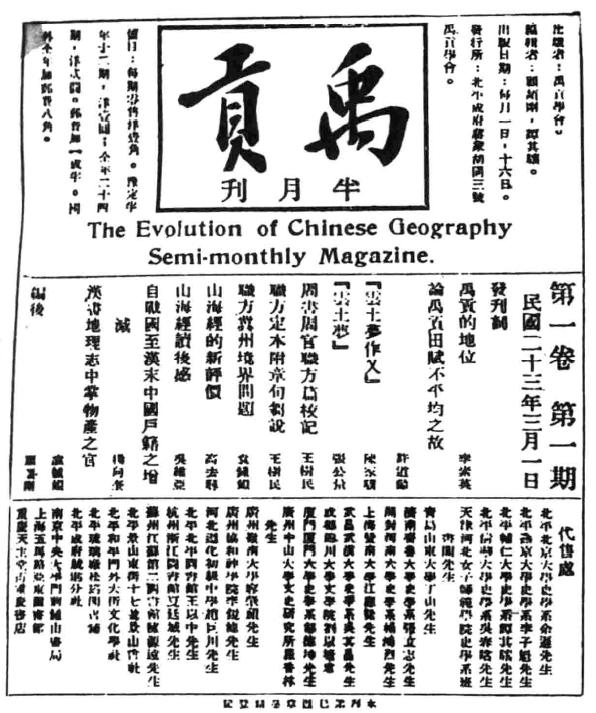
Liberation Weekend: Your doctoral thesis was written on "Geography of the Eastern Han Political Region". Why did your research focus shift to "Shui Jing Zhu"?
Li Xiaojie: Actually, it is the wish of many predecessors in the field of historical geography to re study the "Shui Jing Zhu". Mr. Tan Qixiang attaches great importance to the classic work of historical geography, Shui Jing Zhu. After completing the compilation of the eight volumes of the "Atlas of Chinese History", his most desired task was to explore the "Annotations on the Water Classic".
Teacher Zhou Zhenhe has also repeatedly called for geographical research on "Shui Jing Zhu", providing important references for today's mountain and river management and landscape transformation.
After completing the "Geography of the Eastern Han Dynasty Administrative Regions", I continued to follow Mr. Zhou Zhenhe in researching the geography of administrative regions and independently wrote some parts of the "General History of Chinese Administrative Regions". In this process, I have accumulated some research methods and materials, and I feel that I can start working on the "Shui Jing Zhu".
For example, in the "General History of Administrative Divisions in China: Five Dynasties and Ten Kingdoms" section, I designed a concise schematic diagram of the rise and fall of political power, which can comprehensively display the process of successive dynastic regimes and administrative divisions. Applying this approach to the various river basin maps in Shui Jing Zhu forms a conceptual map of waterways similar to subway lines, which enables readers to clearly distinguish the main or tributaries of rivers in the map.
Liberation Weekend: As early as the Warring States period, China had a regional geographical work called "Yu Gong" in the Book of Documents. Can we say that compared to other civilizations, the Chinese civilization places a unique emphasis on historical geography?
Li Xiaojie: In the West, there is a specialized academic journal called "Historical Geography". But there are significant differences between the West and China in terms of research content and methods. It can be said that China's historical geography has very unique characteristics in terms of research objects and data application.
Firstly, in terms of the length and continuity of history, few countries in the world have a civilization of over a thousand years like China. Secondly, from the perspective of the completeness of literature records, China's tradition in Confucianism and historiography has enabled each generation to continuously collate and annotate traditional classics, objectively enabling the long-term dissemination of classic materials. Finally, China has a vast territory and diverse natural environment, which can provide sufficient relevant data and samples for historical geography research.
From "Yu Gong" to "Shui Jing Zhu", and to today's new interpretations and illustrations, China's historical geography has always been closely related to the development of the times, and the grasp of complex historical changes will also provide reference for many major issues facing people today, such as climate change, ecological environment, and water conservancy engineering.
Silent chamber can also seek depth
On April 22nd, in Conference Room 2201, West Main Building of Guanghua Building, Fudan University, a opening report meeting for a major national social science project titled "Annotations on Water Economy" and the Restoration of Waterways and Political Districts "was being held.
Li Xiaojie is the protagonist of this meeting.
This is a secret and great journey, uniting more people with a firm goal, allowing this vast network paved by mountains and rivers to salvage more abundant historical past.
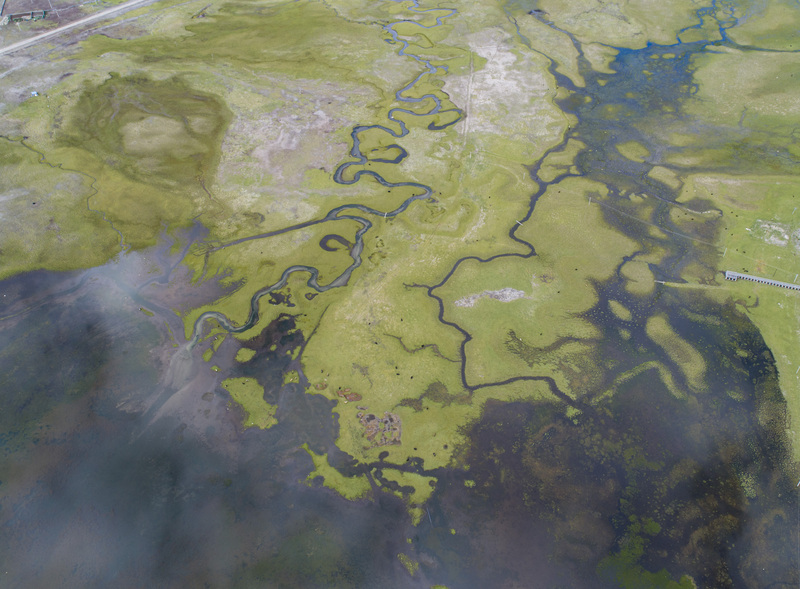
Liberation Weekend: "Shui Jing Zhu" has a huge amount of space, how did the research team complete such a massive project?
Li Xiaojie: Since 2011, we have conducted on-site visits and in-depth research on some watersheds in the "Shui Jing Zhu" by utilizing relevant literature, archaeological materials, and GIS data analysis methods.
At first, the team consisted of only about four or five people, but as the project progressed, the number of people involved gradually became more diverse. In recent years, many undergraduate, master's, and doctoral students from the Chinese and History departments have come to listen to our discussions.
For students who voluntarily join, we will assign tasks to each individual based on specific project planning and individual expertise, and add 1-2 personnel who have been rooted in the project for a long time, which can basically maintain the dynamic balance of the team. For over a decade, we have regularly discussed the issues involved in the text one by one, 2-3 times a week, half a day each time. We will continuously refine the problems encountered in the text and break them down, forming various plans such as material collection, on-site visits, and group discussions.
Liberation Weekend: Has a relatively stable research paradigm been formed during this process?
Li Xiaojie: For the research of each watershed, we strive to create something new, and through innovation in research methods and presentation methods, create new paradigms for historical research, and drive the updating and transformation of related disciplines.
Taking the 3D restoration of the famous water diversion project Qianjin Fen in the Luoshui River Basin as an example, I used architect specific mapping software to create a model that not only presents the full view of ancient water conservancy projects in 360 degrees, but also vividly displays the size ratio between them and the river. This was self studied and completed by me in a week at Bilibili.
The other members of the research group are the same. Historical geography is a highly practical discipline that requires them to continuously learn new knowledge and skills in the process of discovering and solving problems. Many of the students in our project team were completely clueless about drawing maps when they first arrived, and now they can be considered as the "master of cartography".
"Annotations and Annotations on the Water Classic: Various Chapters in the Luoshui River Basin"
Liberation Weekend: Not only is it large in size, but the research cycle of the "Shui Jing Zhu" project is also very long, so it is difficult for students to fully follow up on the entire project.
Li Xiaojie: Many times, members are only a part of the project. Although some viewpoints and evidence may have been overturned after repeated discussions or verifications, we respect their labor achievements and list their names after the project is completed or written.
Liberation Weekend: Currently, are there many students who have stepped out of the "Shui Jing Zhu" project team and continue to engage in historical geography research?
Li Xiaojie: In the current disciplinary system, the research and development of historical geography cannot be fully extended, and it is also difficult to retain talents.

World history and other disciplines have been separately classified as first level disciplines, while historical geography still faces some difficulties, such as disputes over disciplinary ownership and unclear disciplinary development direction.
On the one hand, because it is an interdisciplinary field, it is difficult to have a clear and definite positioning, unlike historical studies that focus mainly on dynastic history, or geography that focuses mainly on modern geography.
On the other hand, there is also a continuity issue between talent cultivation and reserve. In our team, there are many interdisciplinary students who need to constantly supplement their knowledge of history, geography, and cartography skills through practice. This not only requires a longer time cycle, but also requires the refinement of practical cases.
Academic research is a task that requires sitting on a bench, especially in the study of specific ancient and modern geographical research, which requires more than twice the energy of ordinary people to complete.
Liberation Weekend: For an ordinary person, it may not be intuitive to feel the value and significance of restoring a pre 6th century river and waterway system. Do researchers have such doubts?
Li Xiaojie: Doing historical research sometimes makes it difficult to see immediate results. Today, when we study the Commentary on the Water Classic, we may still marvel at the magnificent scenery of the Three Gorges, but perhaps we would not have thought that without previous research, these texts and descriptions would have been lost in the long river of history.
And in the future, people may be able to glimpse the mountains and rivers of our era through our newly compiled "Annotations on the Water Classic" and the newly drawn "Annotations on the Water Classic", and see how the context of Chinese civilization and history extends. I think for researchers, this requires not only a historicist perspective, but also a spirit of sacrificing oneself for others.
Liberation Weekend: Currently, historical geography still seems to be a "high cold" discipline. How to bridge the gap between ordinary people and historical geography research?
Li Xiaojie: Due to the unique characteristics of "Shui Jing Zhu", readers must refer to the map, otherwise they can only appreciate the text and have difficulty understanding the geography. Therefore, we hope to establish a spatial database of land interpretation using modern technology on the basis of the existing "Water Economy Annotation Map" and draw a new "Water Economy Annotation Map".
At present, we are collaborating with Nanjing Normal University on a digital "Shui Jing Zhu" project, hoping to digitize and visualize various river basins based on our published "Shui Jing Zhu" interpretation. At that time, everyone can easily access it, which will also provide convenience for research in related disciplines.
Liberation Weekend: What are your and your team's plans next?
Li Xiaojie: Currently, we are conducting research on the Huai River Basin. In the future, I want to finish the tributaries of the Yellow River first, and then consider making a part of the Yellow River. Our speed is not fast, but we strive for accuracy. In the future, through remote sensing technology, elevation maps, satellite images and other technological means, the on-site inspection part may be more efficiently completed.


